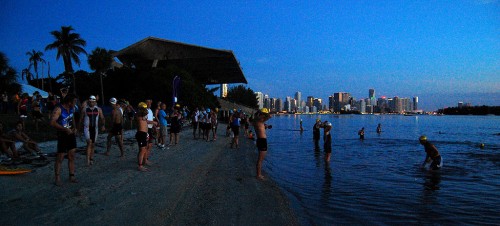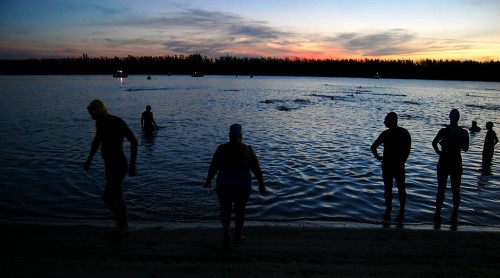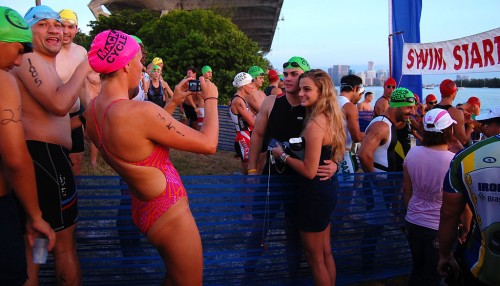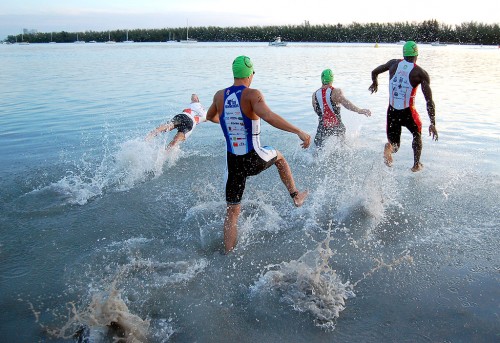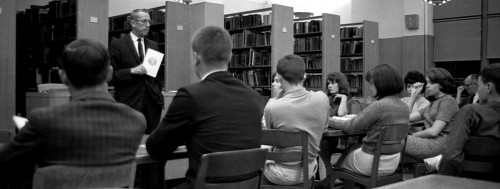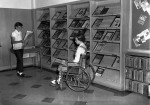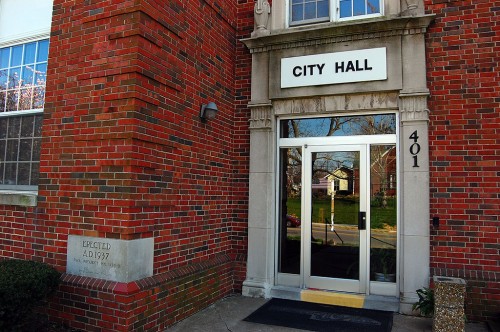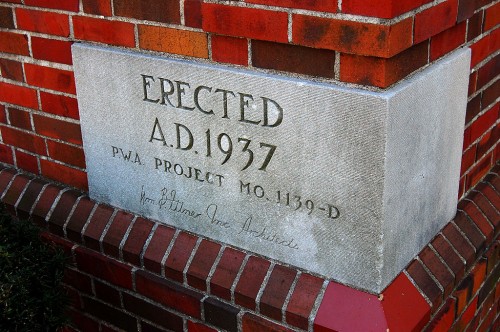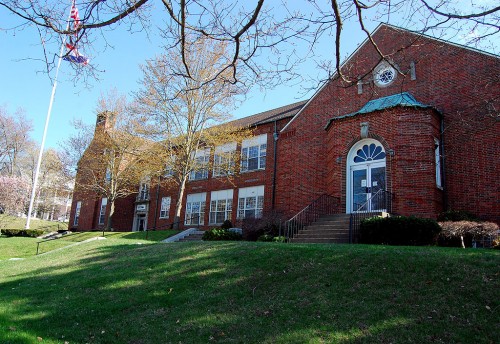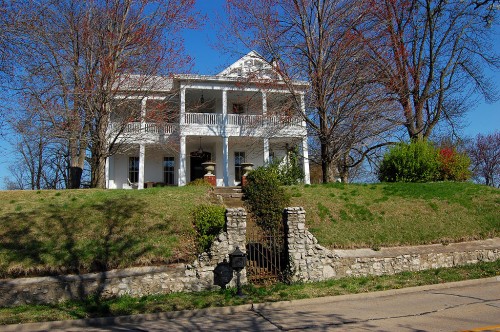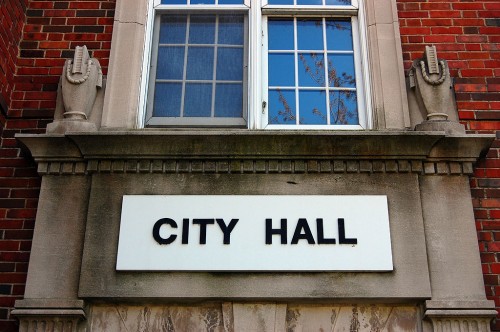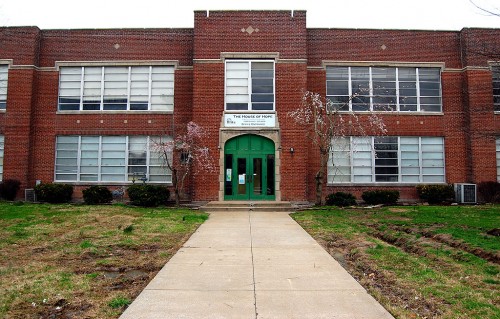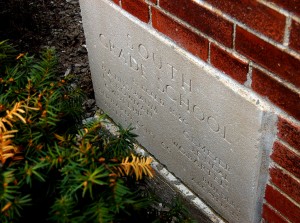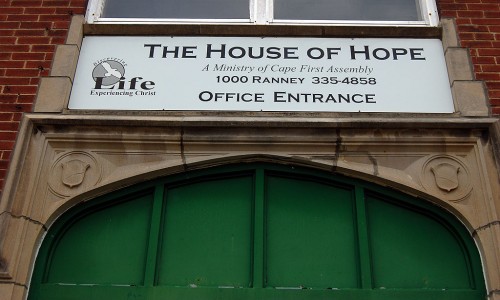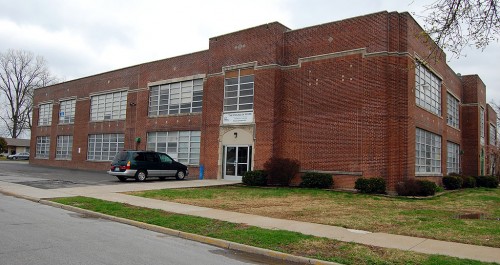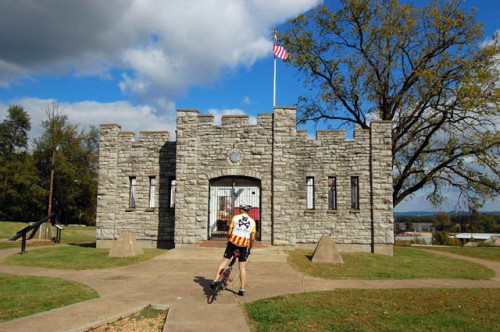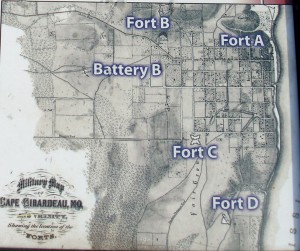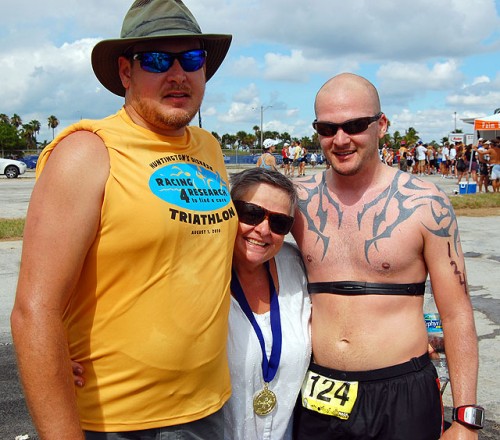 We Steinhoffs are an athletic bunch. Son Matt (left) is a cyclist. Lila Perry Steinhoff, CHS Class of 1966, has been a swimmer since she was a tadpole. She still swims one to two miles a couple of times a week or more. Adam (right) is a triathlete, who does cycling, running and swimming. I ride a bike and jump to conclusions for exercise.
We Steinhoffs are an athletic bunch. Son Matt (left) is a cyclist. Lila Perry Steinhoff, CHS Class of 1966, has been a swimmer since she was a tadpole. She still swims one to two miles a couple of times a week or more. Adam (right) is a triathlete, who does cycling, running and swimming. I ride a bike and jump to conclusions for exercise.
Adam asked Matt and his mother if they’d like to do a family Olympic distance relay at the 19th Annual Huntington’s Disease Triathlon in Miami on August 1, 2010. Each would do a leg of their specialty: Matt would ride his bike 40 kilometers, Lila would swim 1.5K and Adam would run 10K.
I would photograph the event and jump to the conclusion that they were nuts for doing this in August in Florida.
The Triathlon started at Dark O’Clock
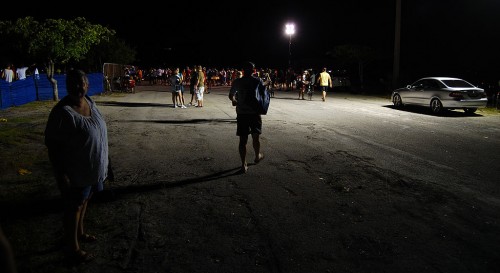 These things start long before the rooster even turns over to smack the snooze alarm for the first time. We decided to stay in a Miami hotel to keep from having to get up even before we went to bed to be there in the pre-dawn hours. The hotel was upscale enough that they provided a couple of bottles of water (if you wanted to pay $6.50 a bottle). If we were hungry, room service would be happy to bring up a $4 Three Musketeer bar for a $3 delivery charge, plus a 21% gratuity.
These things start long before the rooster even turns over to smack the snooze alarm for the first time. We decided to stay in a Miami hotel to keep from having to get up even before we went to bed to be there in the pre-dawn hours. The hotel was upscale enough that they provided a couple of bottles of water (if you wanted to pay $6.50 a bottle). If we were hungry, room service would be happy to bring up a $4 Three Musketeer bar for a $3 delivery charge, plus a 21% gratuity.
I didn’t hear anyone snoring
Lila complained that she didn’t get any sleep because someone in the room was snoring very loudly. I didn’t hear him, and he didn’t keep ME awake, so I think she was imagining it.
They must be afraid of sharks
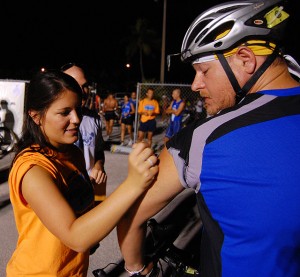 One of the first things they had to do was to check in and get race numbers attached to Matt’s bike and for Adam to display while he ran. Because swimming was involved, everyone had to have their race number written on their arms and legs in waterproof marker. When I saw them scrawling a big R on the back of Lila’s leg, I thought, “Man, they must be concerned about sharks out in Virgina Key Bay if they want to be able to tell which were the Left and Right legs of the swimmers.”
One of the first things they had to do was to check in and get race numbers attached to Matt’s bike and for Adam to display while he ran. Because swimming was involved, everyone had to have their race number written on their arms and legs in waterproof marker. When I saw them scrawling a big R on the back of Lila’s leg, I thought, “Man, they must be concerned about sharks out in Virgina Key Bay if they want to be able to tell which were the Left and Right legs of the swimmers.”
I found out later that I was getting my jumping to conclusions exercise. “R” stood for relay, meaning that it was a team, and not an individual entry. (I like my original theory better.)
Lila is NOT under house arrest
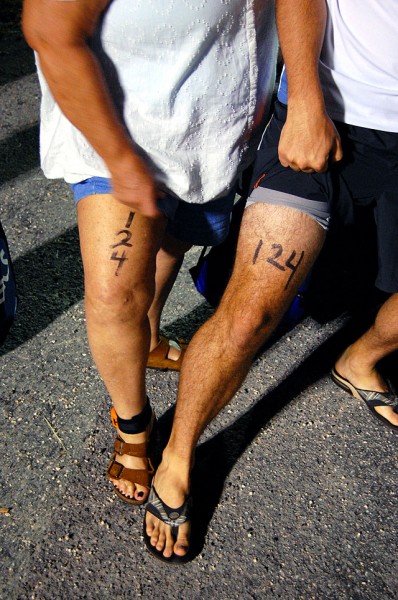 Lila is wearing an electronic device around her ankle, but she’s not under house arrest, nor has she been palling around with Lindsay Lohan.
Lila is wearing an electronic device around her ankle, but she’s not under house arrest, nor has she been palling around with Lindsay Lohan.
The ankle straps contain timing chips that tell how long each athlete takes to cover a particular leg and how long they take in the “transition area” to switch to the next specialty. Swimmers, for example, have to make it out of the water, find their bicycles, put on cycling shoes and a helmet and hit the bike course.
Lila’s chip said she finished her swim in 47 minutes, 53 seconds. When she got to the bike transition area, she handed off the timing chip to Matt and was done for the day. She was lucky that her timing chip stayed on. Right after one of the elite groups took off, a timing anklet was seen floating about 40 feet offshore. Losing the chip can mean disqualification and having to pay $35 to replace it.
The wonders of digital cameras
When the swimmers went to check out the Swim Start area, it was so dark that about all you could see was the Miami skyline in the distance. I was amazed at how much detail the Nikon D40 will pick up with almost no light.
Lila tests the waters
Lila has had few experiences doing long swims in salt water. When the kids were younger, she was in the water shepherding a bunch of Boy Scouts qualifying for their Mile Swim badge. All of a sudden, this huge, dark object rolled over right in their path. She could just see herself writing a packet of “I regret to inform you that your son was eaten by an alligator while in my charge” letters.
Fortunately, the large object turned out to be a harmless manatee.
You can see that the sun was just beginning to think about waking up when she waded into the 87.9 degree water.
Danger: Spilled Testosterone
Before the races start, there’s a lot of kidding around and socializing. Don’t think for a moment, though, that these folks don’t take the event seriously. There was so much testosterone oozing out that the course was slippery.
Starts are controlled chaos
When the starter says “GO!!!” there’s a mad dash to get into the water and start churning. The guy on the right looks like he’s figured out a way to run on top of the water.
Lila’s a Diesel engine
Lila opted for a more sedate water entry, which put her at the back of the pack. She had no illusions about winning her first triathlon; her goal was to finish, hopefully in under an hour. I had no doubt that she’d make it, but some of the lifeguards may not have been so sure.
“As I passed the guys on the paddle boards, some asked how I was doing? I told them I have a Diesel engine. I’m not fast, but I can go all day. They could see that I wasn’t winded or struggling, so all was good. The only problem I had was that, without my glasses, unlike the bright orange buoys at the beginning of the course, the yellow buoys were hard to see against the green along the shore in the early morning light. As I went around the last two buoys, I had to ask the guys on the paddle boards to point me to the next buoy.'”
How Did Team DedicatedIT do?
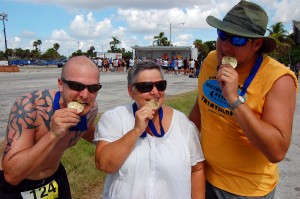 Adam’s goal was to do his run in an hour. His last best time was 1:30. He was disappointed that his final time was 1:09:46. He said that the heat had pushed his heart rate above what he could sustain.
Adam’s goal was to do his run in an hour. His last best time was 1:30. He was disappointed that his final time was 1:09:46. He said that the heat had pushed his heart rate above what he could sustain.
Matt, who was doing this for the first time, didn’t know what his goal was other than not being last. He completed his 24.8-mile bike ride in 1:26:03, an average of a little over 17 mph. Considering the heat and that the course involved climbing the Key Biscayne Bridge four times, that’s pretty good. Another consideration was that he was riding a bike handed down by his uncle, Mark, instead of the specialty bikes favored by the hard-core racers. Some of those bikes are worth more than Matt’s car.
Lila’s swim time for 1.5K (just a hair under a mile), as mentioned before, was 47:53, beating her goal of an hour.
They WERE a little disappointed to find that their gold medals weren’t REAL gold.

